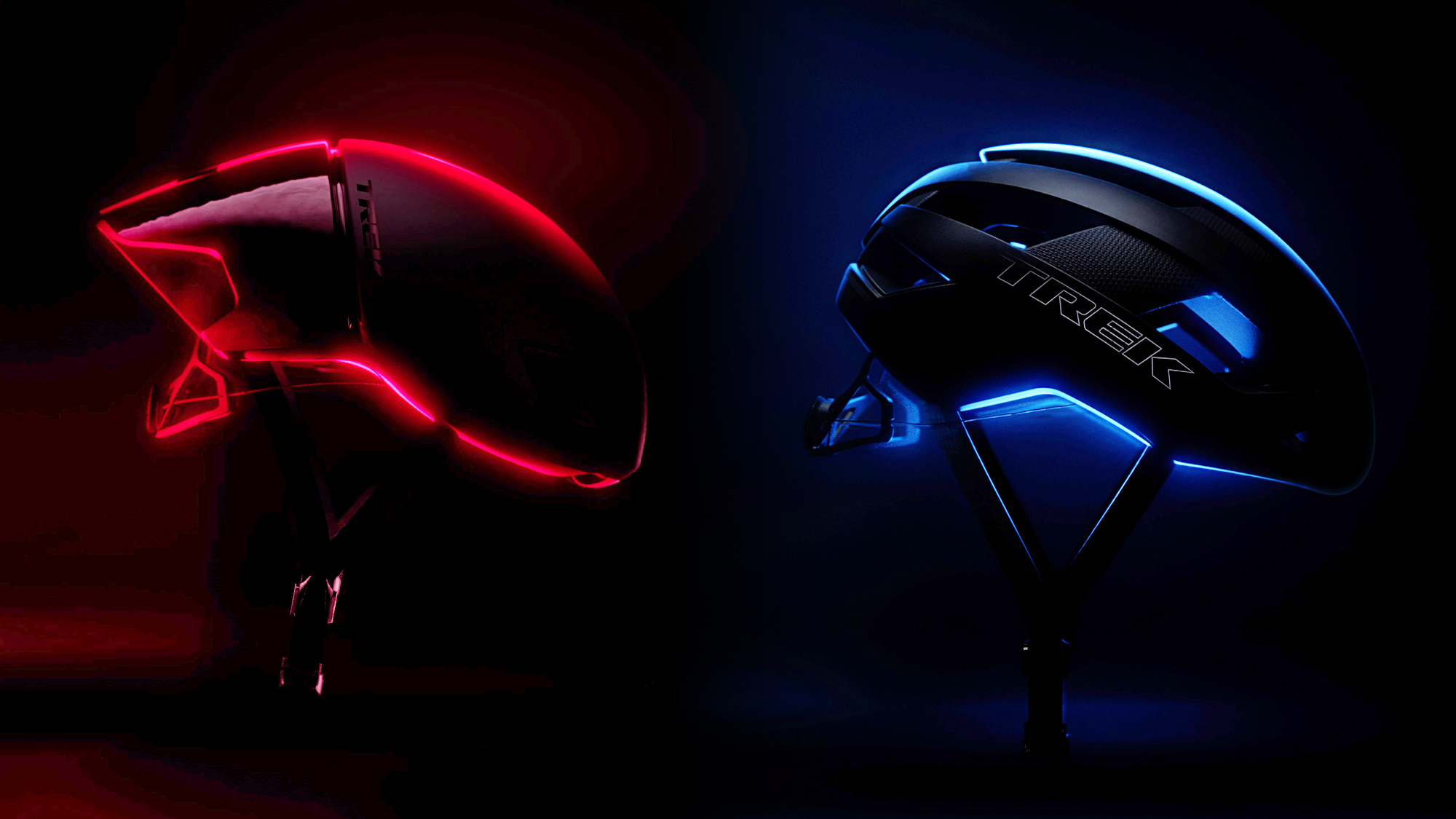
Over the last few years, Trek and the brand's accessory subsidiary Bontrager, have pushed hard to make a name in cycling safety. A central pillar of that is a unique design for a full range of helmets for road, mountain bike, and commuting. Today we are getting a glimpse of a complete redesign, starting with the weight and ventilation-focused Trek Velocis MIPS as well as the all-out aero-focused Trek Ballista MIPS.
If those names sound vaguely familiar, it's because they are not new. Trek previously offered both the Ballista and the Velocis helmets with MIPS and a similar focus via its subsidiary brand, Bontrager. Then, in 2019, both modelnames took a back seat with the release of a range of helmets using a new technology called Wavecel. Since then, there's been an expansion of options with Wavecel and we even included one in our list of the best road bike helmets. What we are seeing today looks to be a return to the time before Wavecel but with an entirely new design and the continued adoption of the latest technologies.
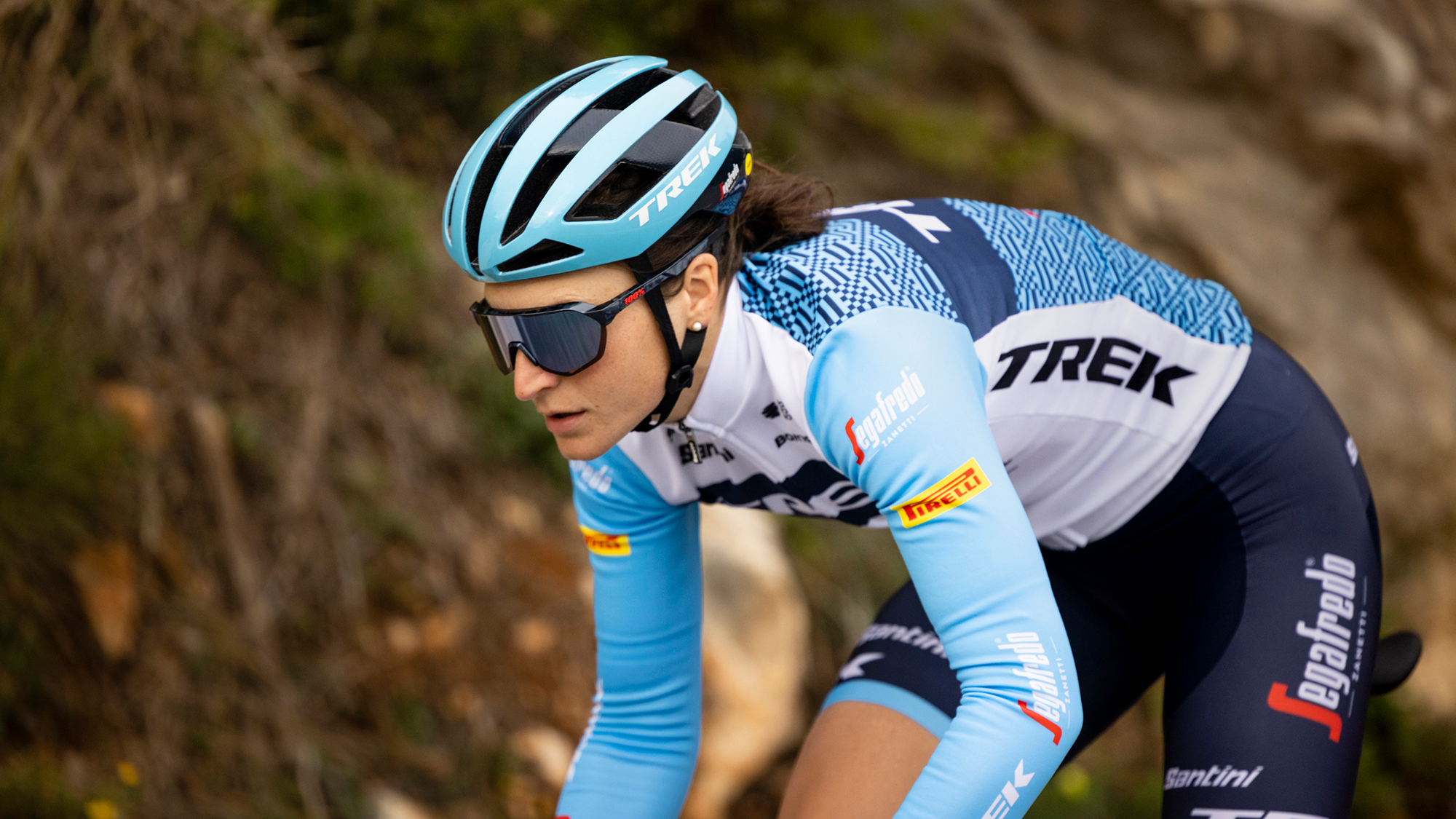
New Trek Velocis MIPS helmet
Today's release covers two helmets but one is not better than the other. The duo represent two options aimed at the highest performance levels and in many ways mirror the development of bike frames over the last handful of years. The Trek Velocis MIPS might once have been the climbers' helmet but today, it's more than that.
Just as we've seen in frames, the lightweight choice has picked up enough aero detailing to cover most situations. In this case, though, Trek has remained rather vague on that front. While there are references to aero performance throughout the marketing copy, it's generally not specific. Only once does Trek claim that the Velocis MIPS is "18 seconds faster than the prior generation" Which is presumably a reference to the 2nd generation Velocis and not the most recent XXX Wavecel helmet.
Instead of aerodynamic claims, Trek focuses on the real strengths of the Velocis. Primarily, that means light and airy. Along with the 18-second aero improvement compared to the previous Velocis, the third generation also sees a 38% improvement in cooling capacity. That is in addition to a claimed 260-gram weight, aided by carbon fibre inlays, that makes it the lightest helmet Trek offers for sale.
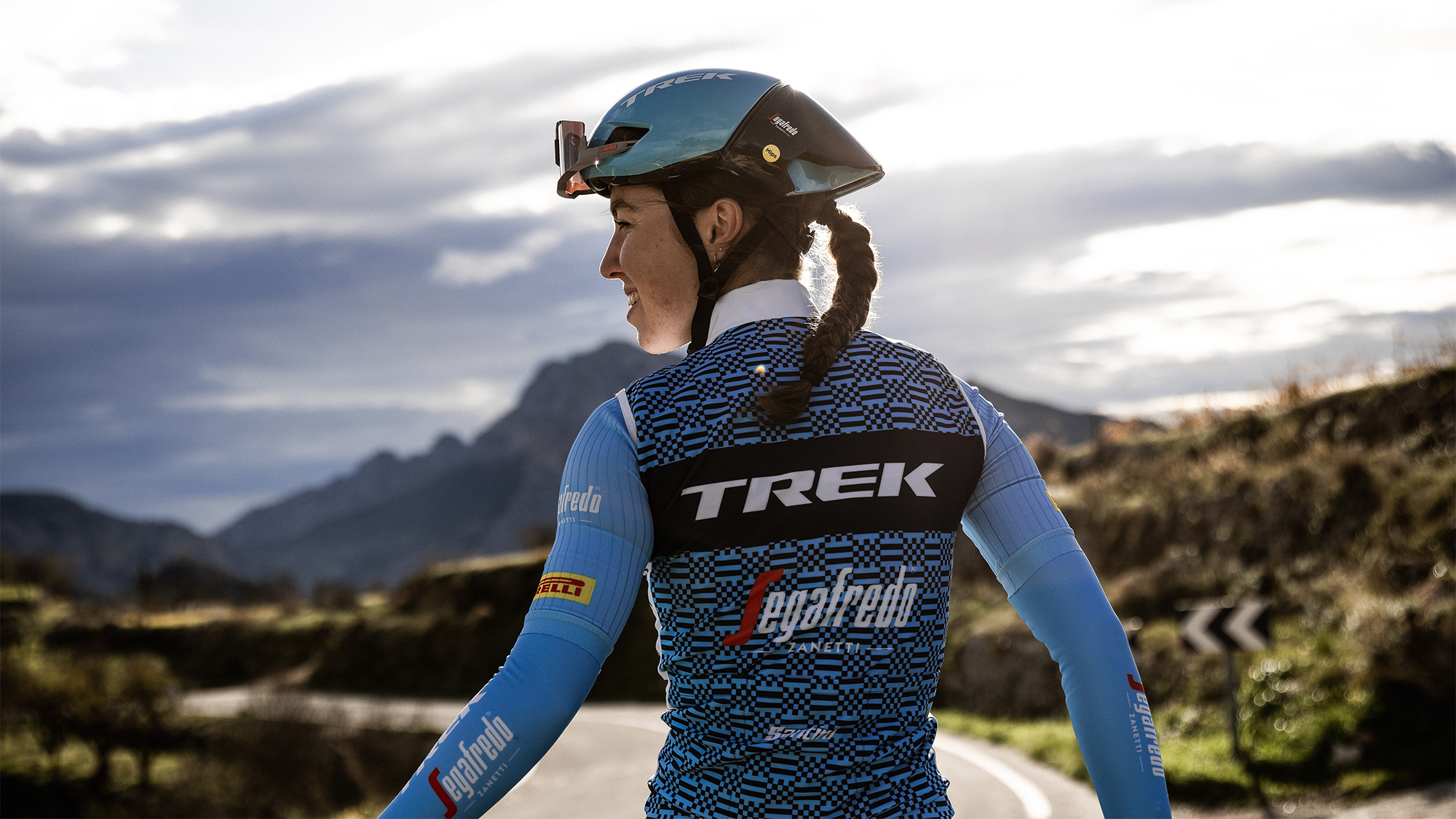
Ballista MIPS helmet
Although the Velocis MIPS and Ballista MIPS are coming to market for the same price on the same day, the two helmets look nothing alike. Bike frame companies may have largely decided that lightweight and aero-optimised is good enough but that doesn't mean there isn't more performance possible. The Trek Ballista MIPS is what happens when a brand is willing to make the fastest helmet possible even at the expense of some liveability.
In fact, initial impressions of the Ballista MIPS will surely have you making comparisons to all-out time trial helmets. As modern TT helmets have gotten shorter tails, the Ballista MIPS has grown longer. Not unlike what Alexander Kristoff did with his Sweet Protection helmet recently, if you take away the face shield and ear covers on a TT helmet and you would land very close to the design of Ballista MIPS. Trek says that aerodynamically the two overlap as well, with the Ballista MIPS performing "in the middle of the pack" compared to today's best time trial helmets.
The Ballista MIPS is not a TT helmet though and you will find everyday livability features. To keep the helmet cool, Trek turned to computational fluid dynamic analysis to optimise vent and channel design. The final design mostly hides the exhaust venting in the downturned tail but at the front, you will find four large vents. Trek claims this optimisation makes "Ballista cooler than its closest competitors."
The other livability feature that seems high on the Trek priority list is weight. Although Trek claims it's heavier than the Velocis, the brand quotes the difference at only 15 grams for a total of 275 grams in the size medium CPSC. Along with that 15 grams, Trek also quotes an aerodynamic advantage of 10.1 watts, which it says equates to a "full bike length advantage during a final sprint."
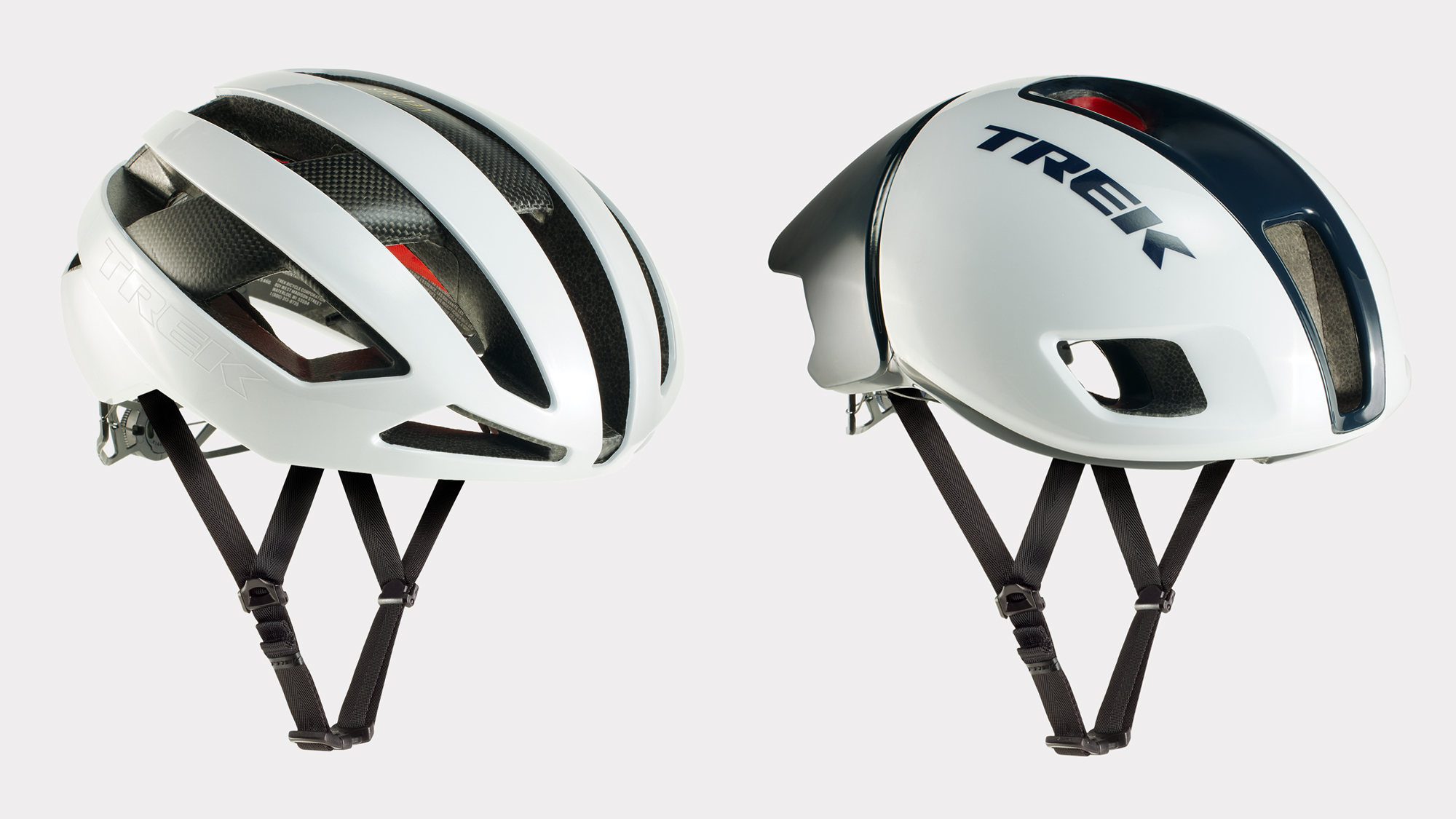
Shared features
Given the shared release date, and presumably shared development, the Velocis and Ballista helmets share a lot. One of the things that means is the two helmets are almost exactly the same internally. The padding is MIPS Air which looks and feels like conventional padding but features a slick backing and only a loose attachment to the inside of the helmet. Instead of using a rigid attachment system connected to a MIPS liner, the brand achieves the same effect with one fewer layer.
The rear cradle and strap system are also both unique and almost exactly the same between the helmets. In both cases, the whole rear cradle structure comes to a point that attaches to the rest of the helmet in one spot. Instead of hard plastic triangulating near the ears, there is only a cord which connects to a BOA dial for adjustment. The effect is a foldable system that looks to be a dream to travel with and presumably came from Trek-Segafredo & Trek Factory Racing feedback during development.
It seems likely team feedback also helped shape the inclusion of sunglasses retention and a bevelled front edge. Although added sunglasses retention isn't all that unique, it's generally appreciated. In this case, it comes in the form of rubber inserts on the inner edge of the outside vents. More unique though, and more racing specific, is the bevelled front edge. It means a quick angle away from the brow to help increase visibility and would certainly be an advantage in a race situation.
Trek has also made sure to submit the new helmets to Virginia Tech for testing. The latest helmets, both the Velocis and the Ballista, score the top rank of five stars. That matches the performance of the XXX Wavecel, as well as the previous generation of both the Velocis and Ballista but again, it's always an appreciated feature. In the event something does happen, both helmets also feature a “Crash Replacement Guarantee” that provides “customers with a free replacement helmet if their helmet has been impacted within the first year of ownership.”
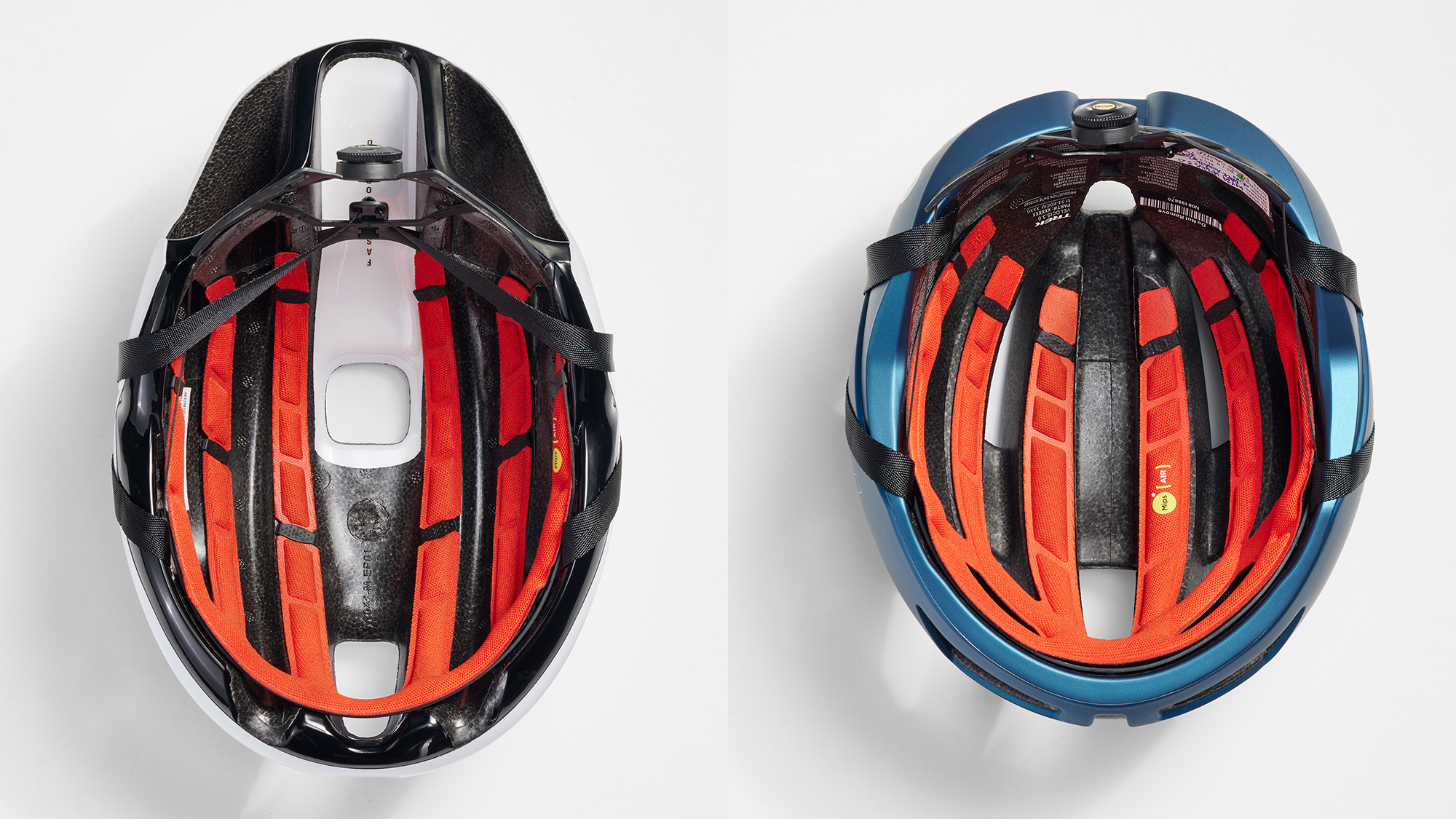
What happened to Bontrager and Wavecel?
In today's world, Bontrager is the house component brand for Trek. Bikes bear the Trek name while the sprawling list of options that outfit those bikes and the riders who own them, carry the Bontrager name. That reality though comes after a purchase of a brand almost 30 years ago. It's a homage to one of the most influential names in the history of cycling but it would seem that Trek is beginning to simplify.
The meaning that the Bontrager name once had has begun to wane and recently, we've seen Trek rebrand a number of products. There's been no grand announcement but each recent release has come with a small bit of text that yet another category of product will now fall within the Trek brand name. This time it's helmets and the Velocis and Ballista are only the beginning. Expect each new release to further erode the products left that carry the Bontrager name.
While the future for Bontrager appears written on the wall, Wavecel is less clear. Wavecel is the name for a technology introduced in 2019 as an innovative way to handle rotational impact protection. Instead of EPS foam and a MIPS liner, Wavecel replaces both with a crushable structure of plastic cells.
Unlike with the Bontrager name, there is no grand history for the Wavecel technology. There is also no definitive break with it. Trek claims "WaveCel is a leading helmet safety technology and is and will continue to be a priority for Trek." For now, though, it would seem that at the high-end, MIPS has won the day with advancements. There is no longer a need for an internal structure and today's Velocis and Ballista use the same MIPS Air technology we've seen in a variety of recent helmets. It's lightweight and almost indistinguishable from standard helmet padding. It’s also lighter and airier than a WaveCel helmet and that’s a primary focus for both of these new helmets.
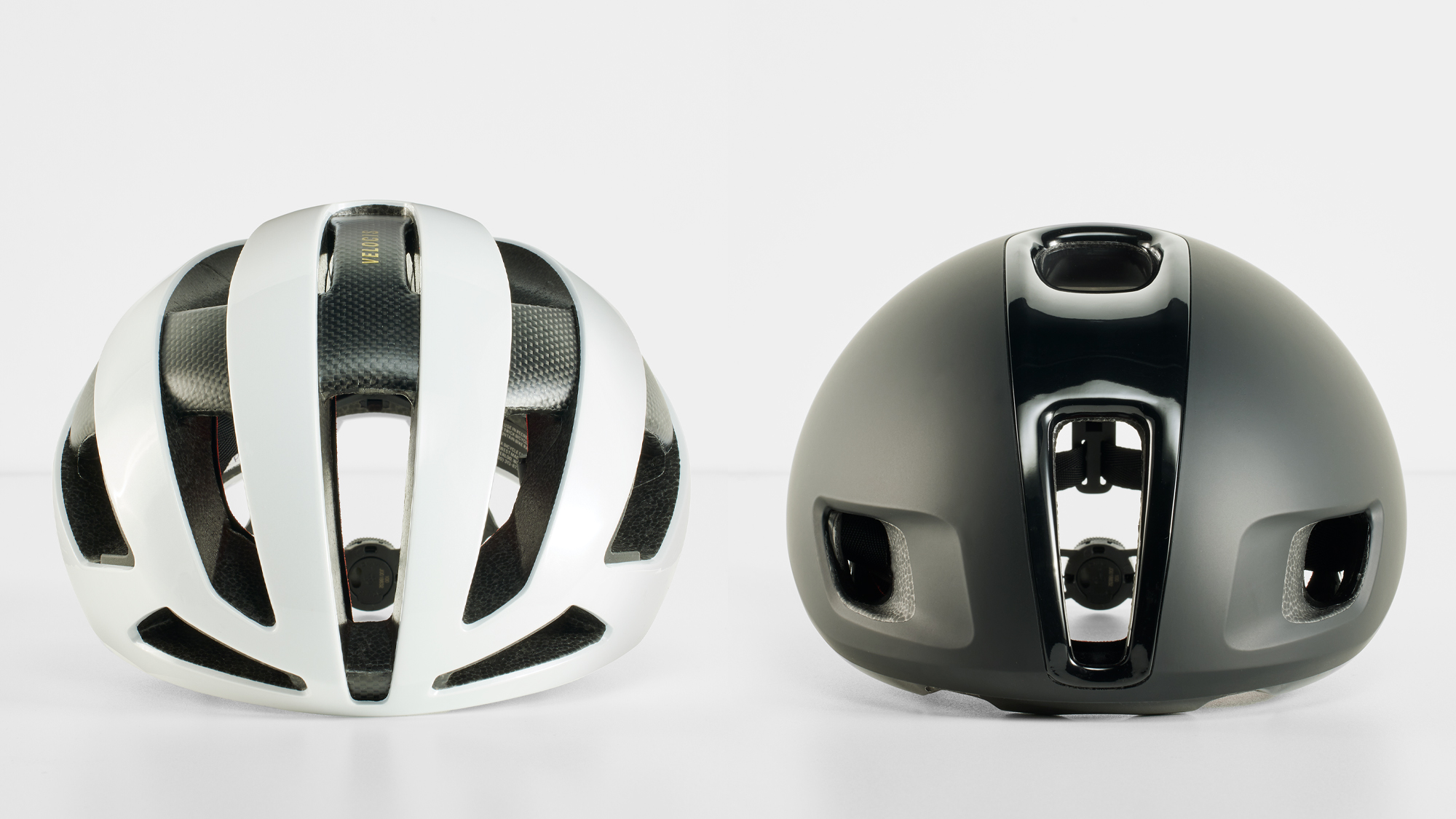
Pricing and availability
The Trek Velocis MIPS and Trek Ballista MIPS have already made their debut in WorldTour racing but are now available to consumers across the world. Pricing for both is the same at £229.99 / $299.99 with an included carry bag. Colours offered at launch for the Ballista MIPS are Black, White, White/Nautical Navy, and Purple Flip while the Velocis MIPS will see Black, Crystal White, Dark Aquatic, Viper Red/Cobra Blood, and Crystal White/Nautical Navy.







